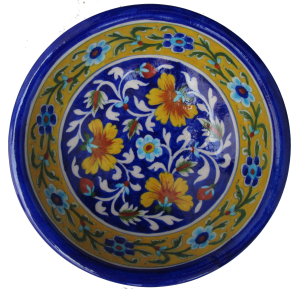
Reading a book or just soaking the warm sun-rays although a rare delight in the capital’s winter weather can be a moment to look for. Wrapped up in a coarse shawl called dhabla predominantly a man’s shawl can be cosy and slowly becoming quite popular. The dhabla is traditional shawl/blanket, the width of the blanket versions are wider which is achieved joining two lengths at the centre. These are all woven in a loom with the patterns achieved by an extra weft supplement. Most of these dhablos display intricate woven patterns which almost appear like embroidery. Weaving such a dhabla can be a very time intensive process requiring a great deal of skill. The Ahir dhabla comprises multi-coloured geometric patterns which can stretch the entire field of the product.
The weavers (vankars) of these exquisite shawls are basically from a migrant community of Meghwals from Rajasthan who are now settled and operate from a small village of Bhujodi, Gujarat. The main task of weaving is generally done by men, although women also join in the other related work.[1]A variety of products such as shawls, furnishings, stoles and shoulder cloths (khes) are made for their traditional clientele who are from various nomadic communities with rigid specifications in terms of design and pattern. The nomadic nature of its clientele finds it multi functional, used either as a shawl or wrapper and also transforms as a blanket at night, keeping the baggage lighter.
[1]Archana Shah.Shifting Sands, Kutch: A Land in Transition. (Ahmedabad: Bandhej Books, 2012), 157-158.
